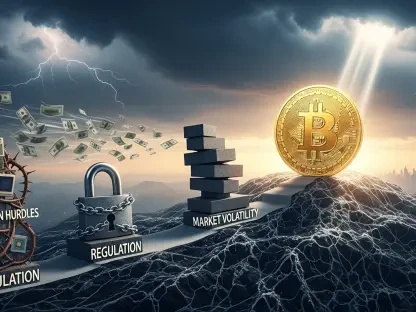Peer-to-peer (P2P) payment platforms such as Zelle, Cash App, Apple Cash, and Venmo have become indispensable in the modern world for their convenience and instantaneous access. They allow users to transfer money with a simple tap, making financial transactions seamless and fast. However, beneath this veneer of convenience lies a growing concern about the lack of transparency surrounding these services, particularly in how they handle scam reimbursements. Recent scrutiny by Consumer Reports has brought to light significant gaps in user agreements that leave consumers vulnerable, raising critical questions about the reliability of these platforms in protecting their users from fraud and scams.
A Critical Look at Transparency
Consumer Reports conducted an in-depth review of user agreements from major P2P payment platforms, including Zelle, Cash App, Apple Cash, and Venmo. The findings revealed a glaring lack of transparency in these agreements, particularly concerning reimbursement policies for scam victims. While most services outline their policies for unauthorized transactions (fraud), they are notably vague when it comes to scams, where consumers are tricked into authorizing payments.
This distinction is pivotal. Fraud involves unauthorized access to a user’s account, typically resulting in prompt reimbursement from the service provider. In contrast, scams involve users being deceived into authorizing a payment, an area where companies have been far less forthcoming about their policies. The lack of clarity leaves consumers unsure about their protections and recourse in the event of falling victim to a scam.
The ambiguity in reimbursement policies is not a trivial issue. Consumers need to know precisely what protections they have, especially as scammers become increasingly sophisticated in their tactics. By failing to clearly outline these policies, P2P payment platforms leave users in a precarious position, often learning too late that their losses may not be covered. Consumer Reports’ analysis highlights the urgent need for these companies to provide straightforward, unambiguous terms regarding scam reimbursements.
Surge in Usage and Regulatory Attention
The popularity of P2P payment platforms increased significantly during the COVID-19 lockdowns, with more people relying on digital transactions for safety and convenience. This spike in usage underscores the need for clear and reliable user agreements, as more individuals are engaging with these services than ever before. However, this uptick in usage has also attracted the attention of lawmakers and regulators, who are increasingly scrutinizing these services. The scrutiny is a direct response to a rise in scam cases, prompting a call for these companies to be more transparent about their reimbursement policies.
Despite this increased attention, Consumer Reports found that user agreements have seen minimal improvements in transparency from 2022 to 2024. While a few changes have been made, they often do not enhance consumer protections. Instead, changes tend to be minor and fail to address the fundamental issues of clarity and comprehensive consumer guidance. The regulatory focus on these platforms has not yet translated into substantial policy changes that would better protect consumers.
Lawmakers and consumer advocates argue that as P2P payment platforms become more integrated into everyday life, the transparency of their policies must match their growing influence. Users deserve clear, easily accessible information about their protections and liabilities. The ongoing regulatory scrutiny should serve as a catalyst for these companies to overhaul their user agreements and prioritize consumer protection. Until these changes are made, consumers remain at risk of inadequate protection and unclear policy terms.
Company Responses and Defenses
In response to Consumer Reports’ findings, reactions from the companies involved were varied. Some did not respond to requests for comment, while others defended their current policies. For instance, Early Warning Services (EWS), the operator of Zelle, stated that its reimbursement policies exceed legal requirements, despite not explicitly covering scams as defined by Consumer Reports. This defensive stance highlights the complexities and discrepancies in how different platforms handle scam-related issues.
Apple and Block, the parent company of Cash App, chose not to comment. Venmo attempted to justify its policies by pointing to sections in their user agreements that offer general advice on preventing scams and unauthorized transactions. However, these sections often lack the specific details that Consumer Reports deemed necessary for clear consumer guidance. The responses, or lack thereof, from these companies illustrate a broader reluctance to address the transparency issues head-on.
The disparities in responses underline the inconsistency in how P2P payment platforms handle consumer protection. While some companies may assert that their policies meet or exceed legal requirements, this does not necessarily translate into clear or fair treatment for consumers. The lack of uniformity and transparency leaves users navigating a confusing landscape where the protections they can expect are not always clear. Consumer advocates argue that a more standardized, transparent approach is needed to ensure all users are adequately protected.
Differentiating Fraud from Scams
A key theme identified by Consumer Reports is the critical difference between fraud and scams, which is frequently misunderstood by consumers. Fraud typically involves transactions made without the user’s consent, such as hacked accounts or stolen credit card information. P2P services usually reimburse these victims as per their legal obligations. This clarity stands in stark contrast to the ambiguity surrounding reimbursement policies for scams, which involve users being deceived into authorizing a payment.
On the other hand, scams involve instances where users are deceived into authorizing a payment. For example, a scammer might pose as a legitimate business or even a friend in need, convincing the user to voluntarily send money. Reimbursement policies for scams are much less clear or generous, leaving victims without recourse in many cases. Despite Consumer Reports highlighting this distinction, user agreements remain opaque, failing to explicitly inform consumers of their liabilities and protections.
This lack of clarity is a significant concern. Consumers must understand whether they will be protected in the event of being scammed, as the financial consequences can be severe. By not explicitly outlining the differences in policy coverage between fraud and scams, P2P payment platforms leave users vulnerable and uncertain. Clear, unambiguous user agreements are needed to help consumers make informed decisions and understand their protections.
Pressing Need for Clearer Policies
Consumer advocates argue that as P2P payment platforms grow more integrated into everyday transactions, the necessity for transparency in user agreements becomes more critical. Payment services have a responsibility to clearly define terms related to scams and fraud, and to lay out the reimbursement policies in a manner that’s easily accessible and understandable to the average user. The growing prevalence of these platforms means that issues of transparency and consumer protection are more pressing than ever.
A detailed examination by Consumer Reports shows that this is not the current reality. Many user agreements are filled with legal jargon and esoteric terms, making it difficult for non-experts to comprehend fully. Advocacy groups are urging these companies to adopt simpler language and more straightforward explanations, enhancing consumer awareness and protection. The push for clearer policies is a call for these platforms to prioritize user understanding and trust.
Simplifying user agreements would not only benefit consumers but also enhance the credibility and reliability of P2P payment platforms. When users understand their protections and liabilities, they are more likely to trust and use these services confidently. Clearer policies would mitigate confusion and reduce the number of disputes and misunderstandings between consumers and service providers. Advocacy groups continue to press for these necessary changes to improve overall consumer safety and clarity.
The Financial Impact of Scams
The escalating sophistication and frequency of scams have significant financial implications for consumers. Statistics indicate a troubling increase in losses, from $1.2 billion in 2020 to over $2.7 billion in recent years. This surge highlights the urgent need for P2P payment platforms to improve their transparency and consumer protection policies. The financial burden borne by scam victims underscores the critical importance of clear, accessible reimbursement policies.
Consumer Reports emphasizes that aligning scam reimbursement policies with those for fraud would be a major step forward. At the very least, companies should improve the clarity and accessibility of their current policies, ensuring that users are adequately informed about their liabilities and the protections available to them. The rising financial impact of scams underscores the necessity for these platforms to take meaningful action to protect their users.
By addressing the financial repercussions of scams and improving transparency, P2P payment platforms can offer more robust protection and security to their users. The alignment of scam and fraud policies would provide a clear, consistent framework for user protection, reducing confusion and improving overall confidence in these services. As digital transactions continue to grow, the need for trustworthy, transparent policies becomes increasingly vital.
Exceptional Cases and Incremental Changes
Peer-to-peer (P2P) payment platforms like Zelle, Cash App, Apple Cash, and Venmo have become essential in today’s fast-paced world because of their incredible convenience and instant access. With just a tap, users can effortlessly transfer money, making financial transactions incredibly smooth and quick. Yet, beneath this surface of convenience, there is a growing unease about the lack of transparency surrounding these services, especially regarding how they handle scam reimbursements. Recent investigations by Consumer Reports have shed light on significant deficiencies in user agreements that leave consumers exposed to risks. These shortcomings have raised crucial concerns about the dependability of these platforms in protecting users from scams and fraud. As more people rely on P2P payments, the necessity for clearer policies and comprehensive protection measures becomes evident. Users must be aware of the risks and demand better safeguards from these companies to ensure their financial security and peace of mind.









